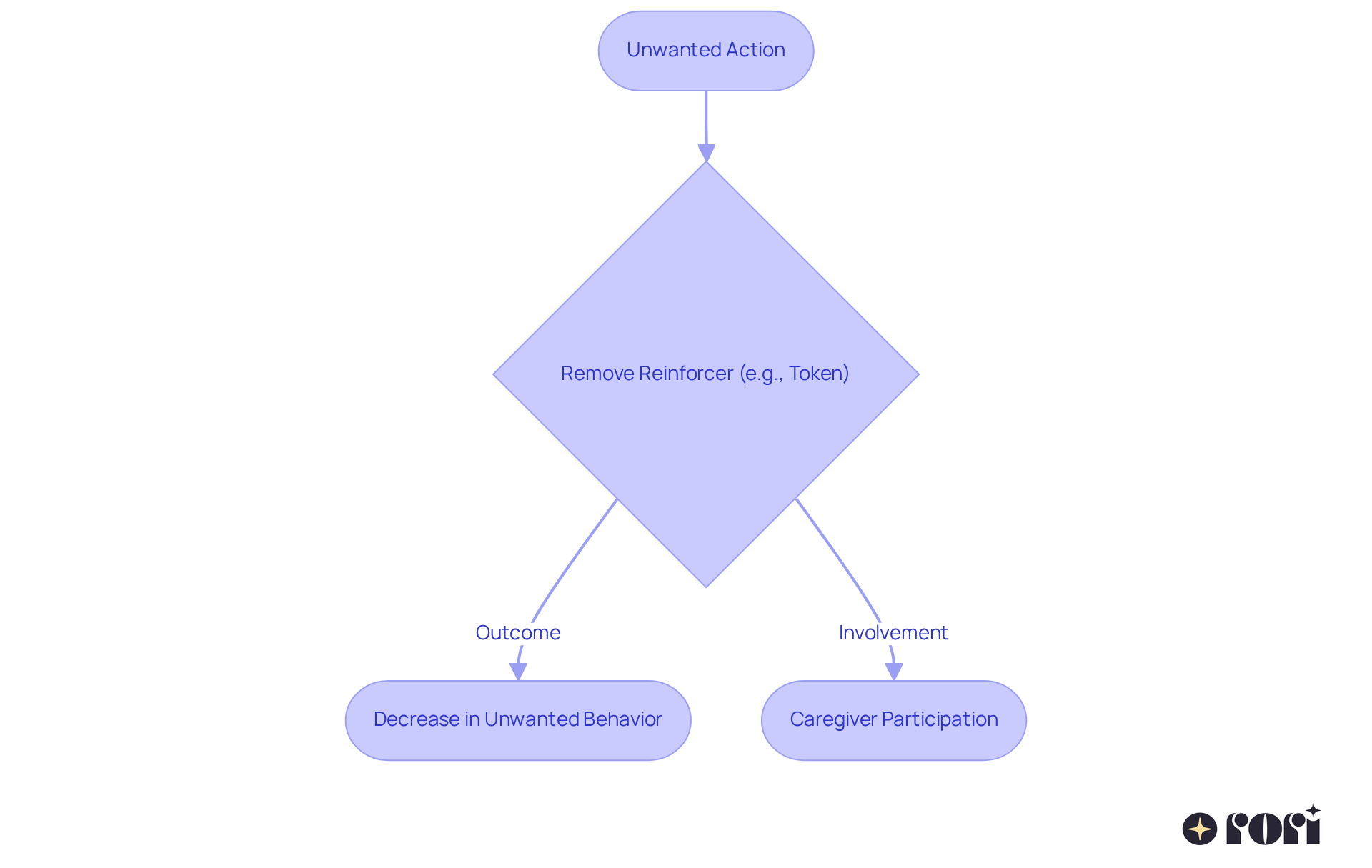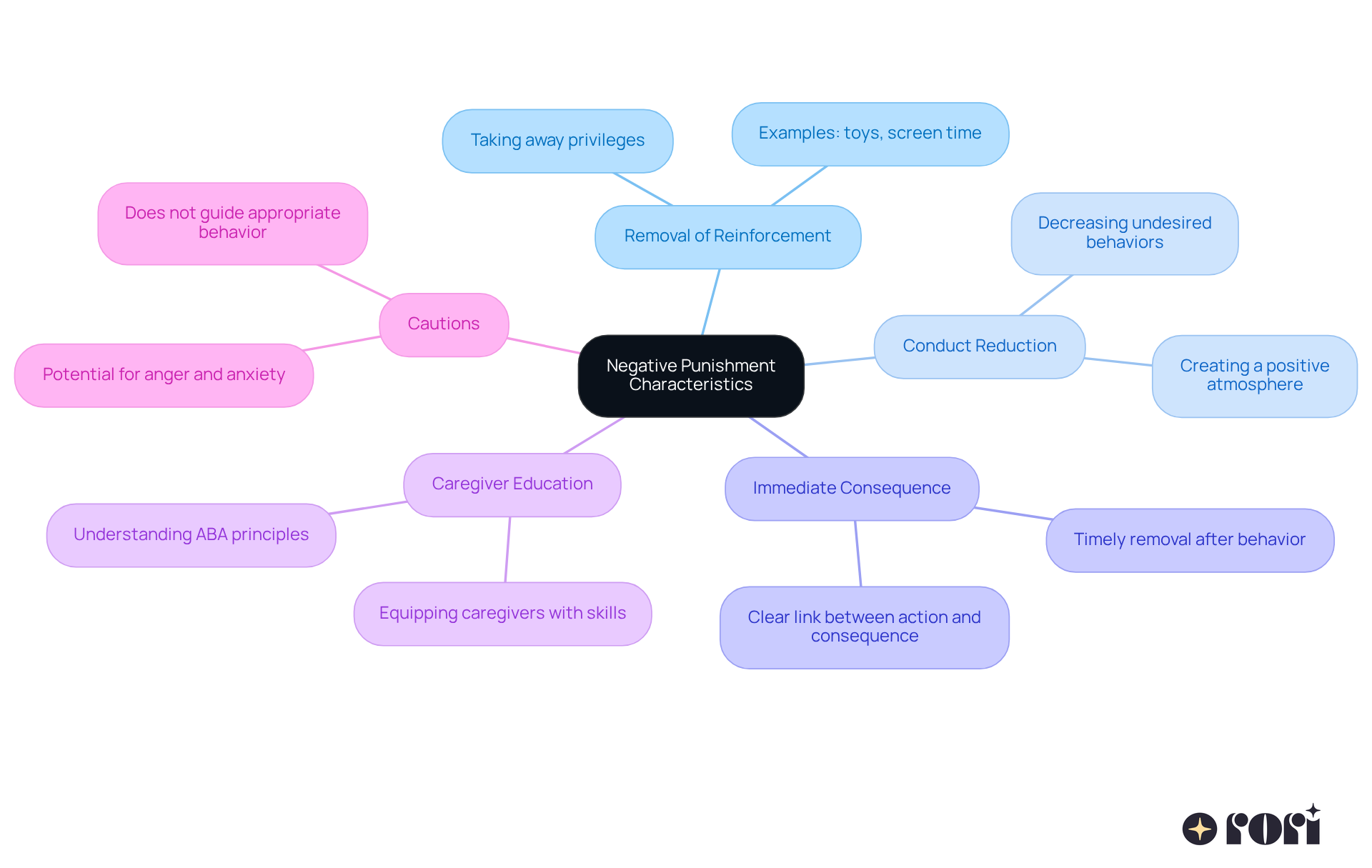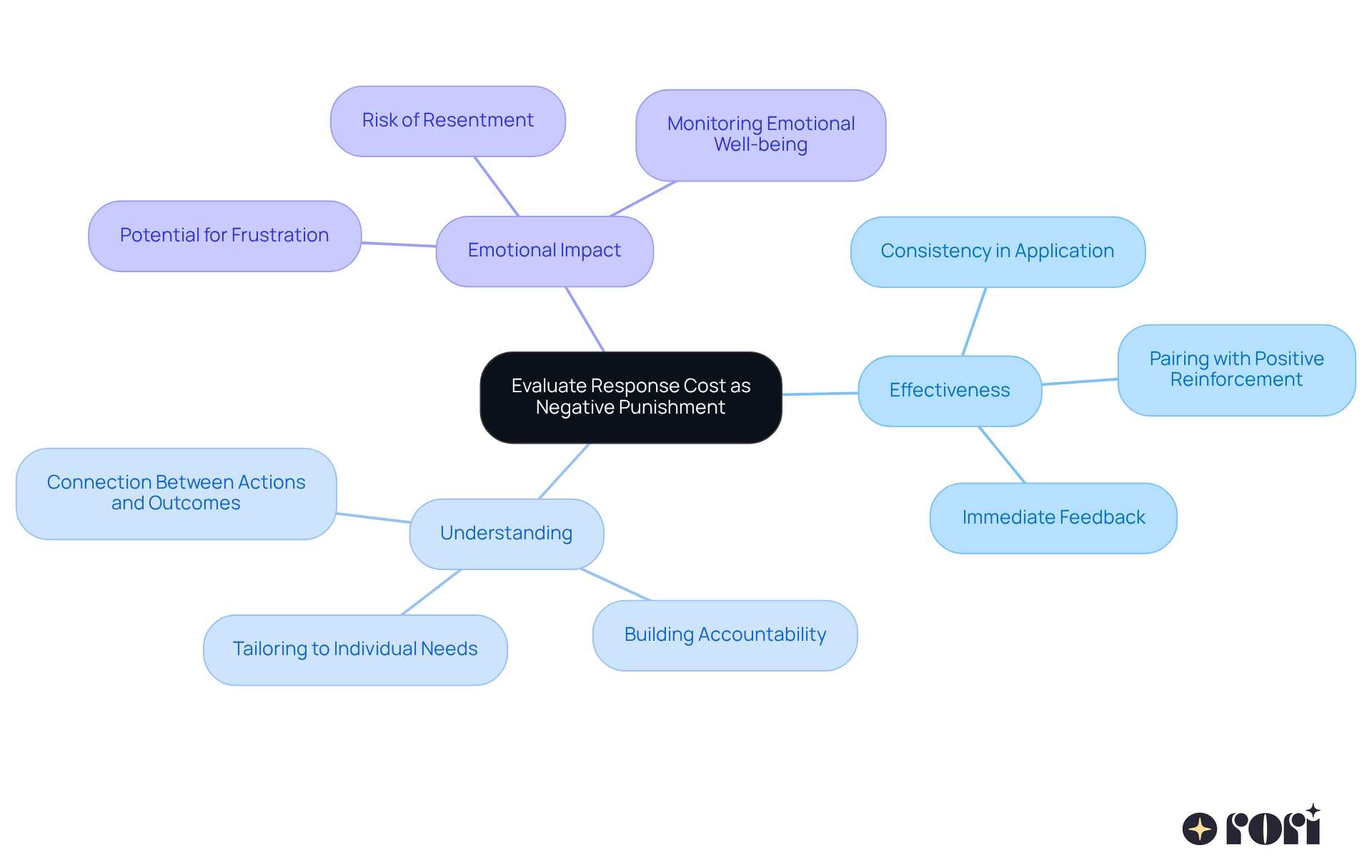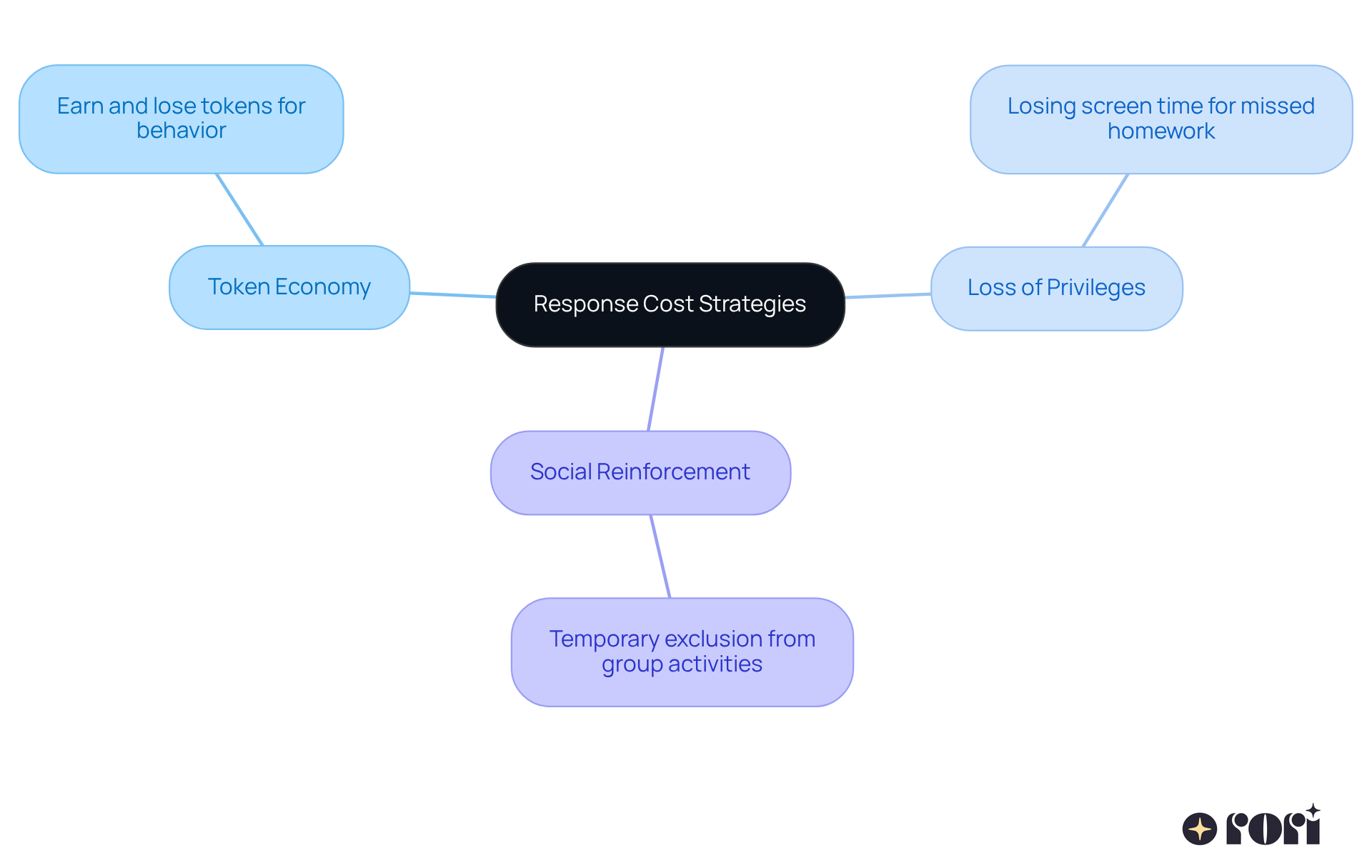Response cost is a form of negative punishment in Applied Behavior Analysis (ABA) therapy, and it works by removing a specific reinforcer to help reduce unwanted behaviors. 😊 This method can be really effective, especially when it's applied consistently alongside positive reinforcement. It helps children grasp the consequences of their actions while encouraging meaningful behavioral changes.
Imagine a scenario where a child loses a privilege, like screen time, when they act out. This can be a powerful moment for learning! By understanding what led to that consequence, children can start to make better choices. Let’s explore this together! It's all about finding that balance and ensuring our little ones know we’re here to support them every step of the way.
Understanding the nuances of behavior management can feel like a complex journey for parents, especially when navigating concepts like response cost and negative punishment. In the world of Applied Behavior Analysis (ABA) therapy, response cost is a vital tool. It helps caregivers modify undesirable behaviors by removing specific reinforcers. Let’s dive into how response cost functions as negative punishment, offering you valuable insights into its application and effectiveness.
However, finding the right balance is key. You want to foster positive behavioral changes while steering clear of potential emotional pitfalls. So, how can you navigate this intricate landscape to support your child's development effectively? We’re here to help you every step of the way!
In Applied Behavior Analysis (ABA) therapy, a behavioral intervention that is response cost negative punishment is utilized. The process is response cost negative punishment, as it involves removing a specific reinforcer after an unwanted action to reduce the likelihood of that action happening again. For instance, if a child loses a token due to misbehavior, this loss is response cost negative punishment, which discourages the undesirable behavior. Isn’t it interesting how effective this can be? Studies show that when applied efficiently—especially through response expense methods—90% of individuals show significant improvement when caregivers are actively engaged in the process.
Active participation is key! Caregivers equipped with ABA principles can really help their children achieve behavioral goals through knowledge, aligned approaches, and data gathering. For parents, it is essential to understand what is response cost negative punishment. It gives them insight into how specific methods can effectively alter their children’s actions. ABA therapists emphasize that clear communication, consistent application, and personalized treatment plans developed by qualified analysts—incorporating measurable goals and evidence-based strategies—are crucial for the success of response management. This approach helps children associate undesirable behaviors with negative outcomes, which is response cost negative punishment, while also reinforcing positive behaviors through structured interventions.
It’s also important to consider ethical aspects. The application of response expense techniques is response cost negative punishment and should always be done in a humane and respectful manner. Systematic observation and data collection are essential for evaluating the impact of response cost, allowing necessary adjustments based on individual progress. By enhancing their understanding of these strategies, caregivers can make informed decisions that positively impact their child's development, providing better support and reducing stress.
Let’s explore this together! With the right tools and knowledge, we can navigate these challenges as a community.

Taking away something enjoyable after an unwanted behavior is response cost negative punishment, which helps to reduce the chances of that behavior happening again. Let's break it down into a few key points:
This approach is often used in ABA therapy, and it works even better when paired with positive reinforcement strategies. This way, kids can learn what behaviors are expected along with the outcomes of their actions. Caregiver education is super important here! It equips caregivers with the knowledge and skills to implement these strategies effectively. By grasping ABA principles, caregivers can make informed decisions that positively influence their child's progress and behavior.
Plus, caregiver education offers extra support, reduces stress, and creates a collaborative environment that benefits the whole family. However, it’s wise to be cautious with negative punishment, as it can sometimes lead to feelings of anger and anxiety, particularly in contexts where response cost negative punishment is applied. It also doesn’t provide guidance on what the right actions are, which is crucial for understanding its limits in behavior management.
A relatable example in schools is when a child is asked to stay inside during recess for misbehaving. This illustrates how negative punishment can be applied in real life. Let’s explore this together and see how we can support each other in navigating these challenges!

Response cost is response cost negative punishment, as it involves taking away a reinforcer to help reduce unwanted behaviors. Its effectiveness really depends on a few key factors:
Effectiveness matters. When response cost is applied consistently and paired with positive reinforcement for the good stuff, it can significantly cut down on those pesky undesirable actions.
Understanding is crucial. It's important for young people to grasp the connection between their actions and the outcomes that follow. This understanding builds accountability and encourages them to change their behavior for the better.
Emotional impact should not be overlooked. We need to consider how the young ones feel. If response charges are used too often, it might lead to frustration or resentment, which could harm the important therapeutic relationship.
So, parents should take a moment to think about these factors. It’s all about finding the right balance that promotes positive behavior changes while also safeguarding emotional well-being. Let’s explore this together! We’re here to help you every step of the way!

Response cost strategies are such important tools for managing behaviors, especially for kids with autism. Let’s dive into some practical examples that might resonate with you:
Token Economy: In this fun system, kids earn tokens for showing positive behaviors, which they can later trade for rewards. But, if they act out, they might lose a token. For instance, if a child interrupts, they could lose a token that might have been saved for a favorite toy or activity.
Loss of Privileges: This approach means taking away certain privileges when undesirable behavior occurs. For example, if a student forgets to do their homework, they might miss out on screen time that evening, highlighting the importance of getting tasks done.
Social Reinforcement: If a child often interrupts others, they might be temporarily left out of group activities. This strategy teaches the value of waiting for their turn and helps build patience in social settings.
These examples illustrate that response cost is negative punishment which can be woven into behavior management strategies, encouraging accountability and positive change. Research suggests that when done right, token economy systems can cut down on unwanted behaviors by up to 87%! That’s a powerful tool in ABA therapy. Educators have noticed that these systems not only boost compliance but also enhance the overall classroom vibe, as kids start to connect their actions with real outcomes. Let’s explore this together and see how these strategies can make a difference!

Understanding response cost as a form of negative punishment is essential for parents facing behavioral challenges. By removing specific reinforcers after undesirable behaviors, caregivers can effectively reduce the likelihood of those actions happening again. This method, rooted in Applied Behavior Analysis (ABA), not only fosters accountability in children but also highlights the importance of structured interventions to encourage positive behavior change.
Throughout this article, we’ve highlighted key points, including:
We’ve also explored the significance of:
Practical examples, like token economies and loss of privileges, show how response cost can be integrated into behavior management strategies, reinforcing the connection between actions and outcomes.
Ultimately, implementing response cost should be approached with care and thoughtfulness. Striking a balance between promoting positive behavior and safeguarding emotional well-being is crucial. By equipping themselves with the right tools and knowledge, parents can create a supportive environment that not only addresses behavioral issues but also nurtures their child's development. Engaging in this process together strengthens the community, fostering collaboration and understanding in the journey of behavior management. Let’s explore this together!
What is response cost in ABA therapy?
Response cost in ABA therapy refers to a behavioral intervention that involves removing a specific reinforcer after an unwanted action to reduce the likelihood of that action occurring again.
How does response cost negative punishment work?
It works by taking away a reinforcer, such as a token, due to misbehavior, which discourages the undesirable behavior from happening again.
What percentage of individuals show improvement with response cost methods?
Studies indicate that when applied efficiently, especially through response cost methods, 90% of individuals show significant improvement when caregivers are actively engaged in the process.
Why is caregiver participation important in ABA therapy?
Caregiver participation is crucial because caregivers equipped with ABA principles can help their children achieve behavioral goals through knowledge, aligned approaches, and data gathering.
What should parents understand about response cost negative punishment?
Parents should understand that response cost negative punishment can effectively alter their children’s actions by associating undesirable behaviors with negative outcomes.
What are the key components for successful response management in ABA therapy?
Key components include clear communication, consistent application, personalized treatment plans developed by qualified analysts, measurable goals, and evidence-based strategies.
How does response cost negative punishment affect children's behavior?
It helps children associate undesirable behaviors with negative outcomes while also reinforcing positive behaviors through structured interventions.
What ethical considerations are there regarding response cost techniques?
The application of response cost techniques should always be done in a humane and respectful manner, ensuring that systematic observation and data collection are used to evaluate impact and make necessary adjustments.
How can caregivers enhance their understanding of response cost strategies?
By enhancing their understanding of these strategies, caregivers can make informed decisions that positively impact their child's development, providing better support and reducing stress.